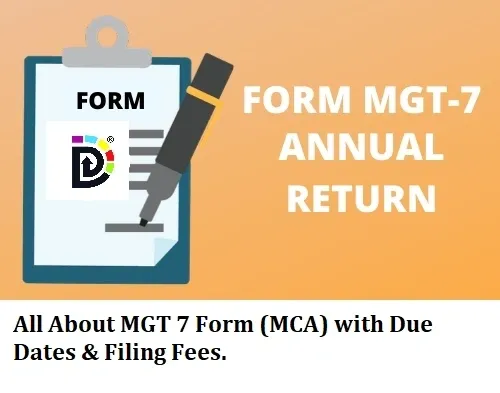Due Dates for E-Filing of TDS & TCS Returns for FY 2023-24: A Comprehensive Guide

Tax Deducted at Source (TDS) and Tax Collected at Source (TCS) are integral components of India’s tax regime, ensuring the collection of taxes at the source of income. Timely filing of TDS and TCS returns is crucial for compliance and avoiding penalties. This article provides a detailed guide on the due dates for e-filing TDS and TCS returns for the Financial Year (FY) 2023-24, along with step-by-step instructions and best practices to ensure seamless compliance.
Understanding TDS and TCS
Contents
TDS: Tax Deducted at Source is a means of collecting tax by the government at the time the income is generated rather than at a later date. The person (deductor) who is liable to make payment of a specified nature to any other person (deductee) shall deduct tax at source and remit the same into the account of the Central Government.
TCS: Tax Collected at Source is the tax payable by a seller which he collects from the buyer at the time of sale. Under the Income Tax Act, of 1961, certain persons are required to collect tax at source from their buyers on specific transactions.
Due Dates for E-Filing TDS Returns for FY 2023-24
The due dates for filing TDS returns are categorized quarterly. Each quarter has a specific due date by which the TDS return must be filed. Here’s a breakdown of the due dates for FY 2023-24:
- Q1 (April to June):
- Due Date for TDS Payment: 7th July 2023
- Due Date for TDS Return Filing: 31st July 2023
- Q2 (July to September):
- Due Date for TDS Payment: 7th October 2023
- Due Date for TDS Return Filing: 31st October 2023
- Q3 (October to December):
- Due Date for TDS Payment: 7th January 2024
- Due Date for TDS Return Filing: 31st January 2024
- Q4 (January to March):
- Due Date for TDS Payment: 30th April 2024
- Due Date for TDS Return Filing: 31st May 2024
Due Dates for E-Filing TCS Returns for FY 2023-24
Similar to TDS returns, TCS returns are also filed quarterly. Below are the due dates for TCS returns for FY 2023-24:
- Q1 (April to June):
- Due Date for TCS Payment: 7th July 2023
- Due Date for TCS Return Filing: 15th July 2023
- Q2 (July to September):
- Due Date for TCS Payment: 7th October 2023
- Due Date for TCS Return Filing: 15th October 2023
- Q3 (October to December):
- Due Date for TCS Payment: 7th January 2024
- Due Date for TCS Return Filing: 15th January 2024
- Q4 (January to March):
- Due Date for TCS Payment: 30th April 2024
- Due Date for TCS Return Filing: 15th May 2024
Step-by-Step Guide to E-Filing TDS Returns
Step 1: Preparation
- Collect Required Information: Gather all necessary information including TAN, PAN of deductees, details of TDS deducted, and challans for TDS payment.
- Use TDS Return Preparation Utility: Download the Return Preparation Utility (RPU) from the TIN-NSDL website to prepare your TDS returns. Ensure you have the latest version of the utility.
Step 2: Preparation of Return
- Fill in the Details: Enter the details of the deductor, deductees, and challans in the RPU. Ensure accuracy to avoid rejections.
- Validate the File: Use the File Validation Utility (FVU) provided by NSDL to validate the prepared return file. This step ensures that the file meets the required format and data standards.
Step 3: Generate Form 27A
- Generate Form 27A: After validating the file, generate Form 27A, which is a summary of the e-TDS/TCS return. This form is generated automatically by the RPU and should be signed by the deductor.
Step 4: Upload the Return
- Login to TRACES: Visit the TRACES website (https://www.tdscpc.gov.in/) and log in using your credentials.
- Upload the Return: Navigate to the ‘Upload TDS’ option under the ‘TDS’ menu. Follow the instructions to upload the validated return file and Form 27A.
Step 5: Acknowledgment
- Acknowledge Receipt: After successfully uploading the return, an acknowledgment receipt will be generated. Save and print this receipt for your records.
Step-by-Step Guide to E-Filing TCS Returns
Step 1: Preparation
- Collect Required Information: Gather all necessary information including TAN, PAN of collectors and collectees, details of TCS collected, and challans for TCS payment.
- Use TCS Return Preparation Utility: Download the Return Preparation Utility (RPU) from the TIN-NSDL website to prepare your TCS returns. Ensure you have the latest version of the utility.
Step 2: Preparation of Return
- Fill in the Details: Enter the details of the collector, collectees, and challans in the RPU. Ensure accuracy to avoid rejections.
- Validate the File: Use the File Validation Utility (FVU) provided by NSDL to validate the prepared return file. This step ensures that the file meets the required format and data standards.
Step 3: Generate Form 27A
- Generate Form 27A: After validating the file, generate Form 27A, which is a summary of the e-TDS/TCS return. This form is generated automatically by the RPU and should be signed by the collector.
Step 4: Upload the Return
- Login to TRACES: Visit the TRACES website (https://www.tdscpc.gov.in/) and log in using your credentials.
- Upload the Return: Navigate to the ‘Upload TCS’ option under the ‘TCS’ menu. Follow the instructions to upload the validated return file and Form 27A.
Step 5: Acknowledgment
- Acknowledge Receipt: After successfully uploading the return, an acknowledgment receipt will be generated. Save and print this receipt for your records.
Best Practices for Filing TDS & TCS Returns
- Timely Filing: Ensure returns are filed before the due dates to avoid penalties and interest.
- Accurate Information: Verify all details meticulously before submission to avoid errors and potential rejections.
- Use Updated Utilities: Always use the latest version of the RPU and FVU to ensure compliance with the latest norms.
- Maintain Records: Keep all documents, acknowledgment receipts, and challans organized for future reference and audits.
- Regular Reconciliation: Regularly reconcile the TDS/TCS records with the financial statements to ensure accuracy.
Conclusion
Timely and accurate e-filing of TDS and TCS returns is critical for compliance with Indian tax regulations. By following the due dates and the step-by-step procedures outlined in this guide, businesses can ensure they meet their obligations without facing penalties. Staying updated with the latest rules and maintaining organized records will further streamline the filing process, contributing to efficient tax management.






